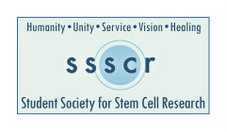| | 10. | Merlin/NF2 Suppresses Tumorigenesis by Inhibiting the E3 Ubiquitin Ligase CRL4DCAF1 in the Nucleus
Pages 477-490
Wei Li, Liru You, Jonathan Cooper, Gaia Schiavon, Angela Pepe-Caprio, Lu Zhou, Ryohei Ishii, Marco Giovannini, C. Oliver Hanemann, Stephen B. Long, Hediye Erdjument-Bromage, Pengbo Zhou, Paul Tempst, Filippo G. Giancotti
Graphical Abstract
► The tumor suppressor Merlin inhibits the E3 ligase CRL4DCAF1 in the nucleus ► CRL4DCAF1 induces an oncogenic program of gene expression ► Tumor-derived mutations disrupt Merlin's ability to bind and/or suppress CRL4DCAF1 ► DCAF1 silencing suppresses the oncogenic potential of Merlin-deficient cells
| | | | 12. | Dicer-Independent Primal RNAs Trigger RNAi and Heterochromatin Formation
Pages 504-516
Mario Halic, Danesh Moazed
Graphical Abstract
► Heterochromatin assembly in S. pombe is mediated by two Argonaute-dependent pathways ► RNA-dependent RNA polymerase and Dicer act on specific noncoding RNAs to generate siRNAs ► Primal RNAs (priRNAs), a distinct class of small RNAs, are Dicer independent ► priRNAs trigger dsRNA synthesis and heterochromatin assembly within DNA repeats
| | | | 13. | Inactivation of Peroxiredoxin I by Phosphorylation Allows Localized H2O2 Accumulation for Cell Signaling
Pages 517-528
Hyun Ae Woo, Sun Hee Yim, Dong Hae Shin, Dongmin Kang, Dae-Yeul Yu, Sue Goo Rhee
Graphical Abstract
► Phosphorylation inactivates peroxiredoxin I (PrxI), an enzyme that reduces H2O2 ► Ligation of growth factor or immune receptors induces PrxI tyrosine phosphorylation ► Phosphorylation occurs on membrane-associated but not cytosolic PrxI ► This localized inactivation of PrxI allows accumulation of H2O2 needed for signaling
| | | | 14. | Elevated ATPase Activity of KaiC Applies a Circadian Checkpoint on Cell Division in Synechococcus elongatus
Pages 529-539
Guogang Dong, Qiong Yang, Qiang Wang, Yong-Ick Kim, Thammajun L. Wood, Katherine W. Osteryoung, Alexander van Oudenaarden, Susan S. Golden
Graphical Abstract
► Circadian clock proteins gate cell division in the cyanobacterium S. elongatus ► Clock proteins CikA, KaiC, and SasA are all involved in this timing of cell division ► KaiC suppresses cell division when its ATPase activity is elevated ► FtsZ ring localization and assembly are targeted events by the clock machinery
| | | | 15. | Actin Dynamics Drive Membrane Reorganization and Scission in Clathrin-Independent Endocytosis
Pages 540-553
Winfried Römer, Léa-Laetitia Pontani, Benoît Sorre, Carles Rentero, Ludwig Berland, Valérie Chambon, Christophe Lamaze, Patricia Bassereau, Cécile Sykes, Katharina Gaus, Ludger Johannes
Graphical Abstract
► Shiga toxin-induced membrane tubules can undergo spontaneous scission ► Membrane reorganization and domain formation correlate with scission ► Scission results from domain boundary forces and does not require dynamin activity ► Actin polymerization triggers scission by inducing membrane reorganization
| | | | 16. | Nfix Regulates Fetal-Specific Transcription in Developing Skeletal Muscle
Pages 554-566
Graziella Messina, Stefano Biressi, Stefania Monteverde, Alessandro Magli, Marco Cassano, Laura Perani, Elena Roncaglia, Enrico Tagliafico, Linda Starnes, Christine E. Campbell, Milena Grossi, David J. Goldhamer, Richard M. Gronostajski, Giulio Cossu
Graphical Abstract
► The transcription factor Nfix acts as a switch in skeletal muscle development ► Nfix activates fetal specific genes and represses embryonic genes ► Premature expression of Nfix activates fetal and suppresses embryonic genes ► Ablation of Nfix prevents fetal and maintains embryonic gene expression
| | | | 17. | Autophosphorylated CaMKIIα Acts as a Scaffold to Recruit Proteasomes to Dendritic Spines
Pages 567-578
Baris Bingol, Chi-Fong Wang, David Arnott, Dongmei Cheng, Junmin Peng, Morgan Sheng
Graphical Abstract
► The protein kinase CaMKIIα associates with proteasomes in the brain ► CaMKIIα translocation to synapses is required for proteasome redistribution ► Autophosphorylated CaMKIIα acts as a scaffold to promote proteasome recruitment ► CaMKIIα is required for activity-induced protein turnover in spines
| | | | 18. | Forgetting Is Regulated through Rac Activity in Drosophila
Pages 579-589
Yichun Shuai, Binyan Lu, Ying Hu, Lianzhang Wang, Kan Sun, Yi Zhong
Graphical Abstract
► Memory decay is bidirectionally regulated by genetic manipulation of Rac activity ► Interference-induced forgetting is suppressed by Rac inhibition ► Flexible behavior in reversal learning is altered by Rac activity manipulation ► Endogenous Rac is activated in parallel with forgetting
| | |












